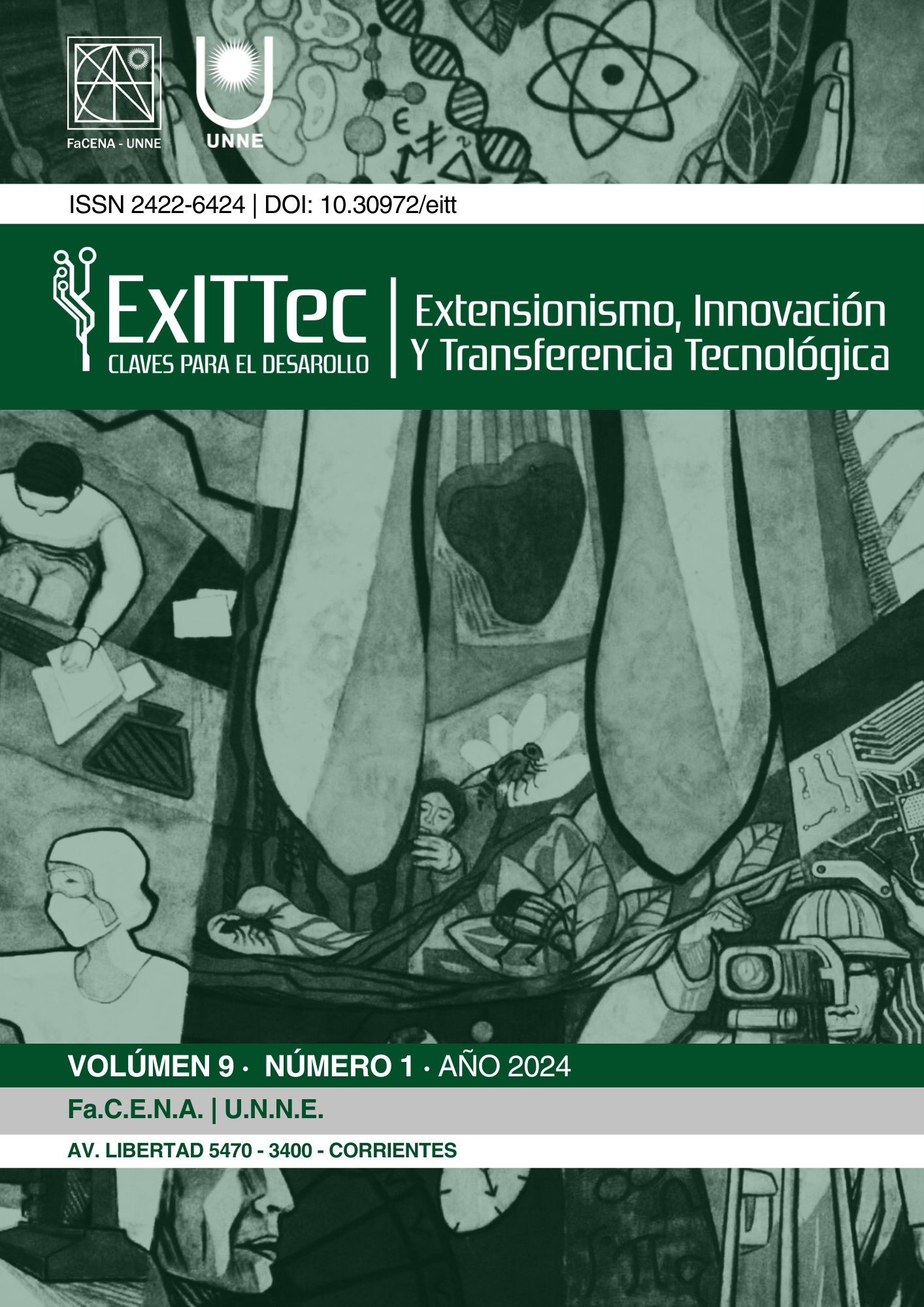Balance del contenido vaginal para detección de patologías asociadas en mujeres en edad fértil
DOI:
https://doi.org/10.30972/eitt.917690Keywords:
Vaginal microbiota, Gynecological health, Differential diagnosis, Yeast infection, Candida albicans, Practical training in biochemistryAbstract
The vaginal microbiota, composed mainly of Lactobacillus spp., plays a crucial role in female genital health. Disruption of this balance can lead to various pathologies, such as bacterial vaginosis (BV) and nonspecific microbial vaginitis (IMV). This work was carried out in collaboration with the "José Manuel Estrada" Teacher Training Institute and the UNNE Faculty of Biochemistry, involving students in the collection and analysis of vaginal samples. The BACOVA method allowed the samples to be classified into five Basic Vaginal States (BSVs), providing an accurate differential diagnosis of vaginal dysfunctions. Of the 14 samples analyzed, 86% presented some degree of vaginal dysfunction, highlighting the prevalence of normal microbiota with an inflammatory reaction (EVB II). In addition, cases of yeast infection, predominantly Candida albicans, and urogenital mycoplasmas were identified, especially in advanced stages of vaginal dysfunction. The results underline the effectiveness of the BACOVA method in the early identification of vaginal pathologies, its applicability in primary care contexts and its potential to optimize gynecological and reproductive health. This project not only provided valuable data for public health, but also promoted the integration of teaching with community work, reinforcing the practical training and social commitment of Biochemistry students.
Downloads
References
Bologno, R., Díaz, Y., Giraudo, M., Fernández, R., Menéndez, V., Brizuela, J.,... & Estevao Belchior, S. (2011). Importancia del estudio del balance del contenido vaginal (BACOVA) en el control preventivo de las trabajadoras sexuales. Revista Argentina de Microbiología, 43(4), 257-261.
De Torres, R. A., Díaz, N., Bonet, C., Pons, H., Lencinas, G., Fernández, A., ... & Guerstein, G. (2011). Manual de procedimientos BACOVA MPB-2011-Proyecto Disfunción Vaginal. Revista Argentina de Microbiología, 43(4), 293-298.
De Torres, R. A., Díaz, N., Bonet, C., Pons, H., Lencinas, G., Fernández, A., ...& Guerstein, G. (2011). Guía práctica integral (clínica-laboratorio) de diagnóstico de vaginosis-vaginitis en la atención primaria de la mujer en edad fértil y menopáusica. Revista Argentina de Microbiología, 43(4), 285-292.
Di Bartolomeo, S., Leonino, A., Rodríguez Fermepin, M. y de Torres, R. (2007). Balance del contenido vaginal en el diagnóstico diferencial de vaginosis-vaginitis: Reacción inflamatoria vaginal en embarazadas sintomáticas. Revista Argentina de Microbiología, 39(2), 99-104.
Ferrero, S. M. (2013/Actualización 2024). Toma de muestras bacteriológicas, recolección, transporte, procesamiento y criterios de interpretación. Apunte de la asignatura Bacteriología y Micología Clínica. Carrera de Bioquímica. FACENA - UNNE.
Fundación Bioquímica Argentina Programa de Salud Sexual y Reproductiva PROSAR. (2012). Disfunción Vaginal Manual de Procedimiento BACOVA.
Ison C. A. y Hay, P. E. (2002). Validation of simplified grading of Gram stained vaginal smears for use in genitourinary medicine clinics. Sex Transm Infect, 78, 413-5.
Keane, F. F., Maw, R., Pritchard. C., Ison, C. A. (2005). Methods employed by genitourinary medicine clinics in the United Kingdom to diagnose bacterial vaginosis. Sex Transm Infect, 81, 135-7.
Lin, D. P., Pan B. J., Fuh, J. C. y Huang, T. H. (2002). Improving Gramstained reproducible result by further adding clue cells in diagnosing bacterial vaginosis. Kaohsiung J Med Sci, 16 (4), 164-70.
McGregor, J. A., French, J. L. (2000). Bacterial Vaginosis in pregnancy. Obstet Gynecol Surv, 55 (5 Suppl 1), S1-19.
Ombrella, A., Belmonte, A., Nogueras, M., Ruiz Abad, J., Sutich, E. y Duglovitzky, D. (2006). Sialidase activity in women with bacterial vaginosis. Medicina (Buenos Aires), 66(2), 131-134.


